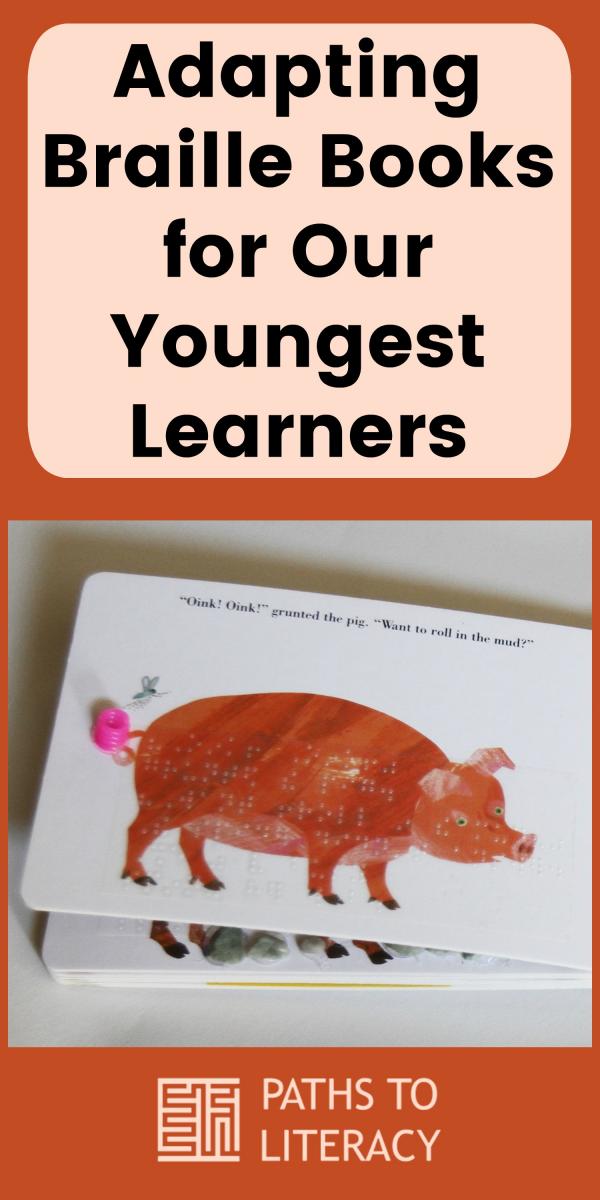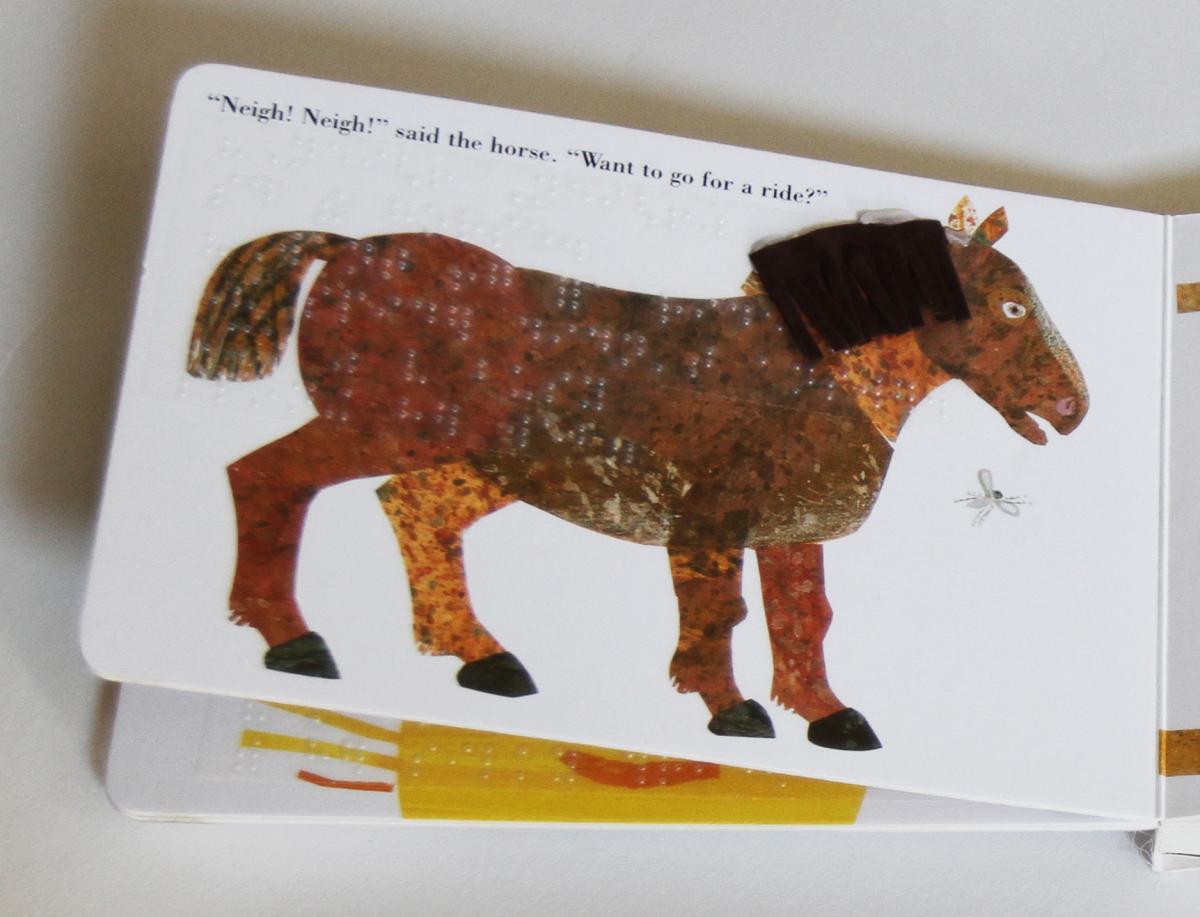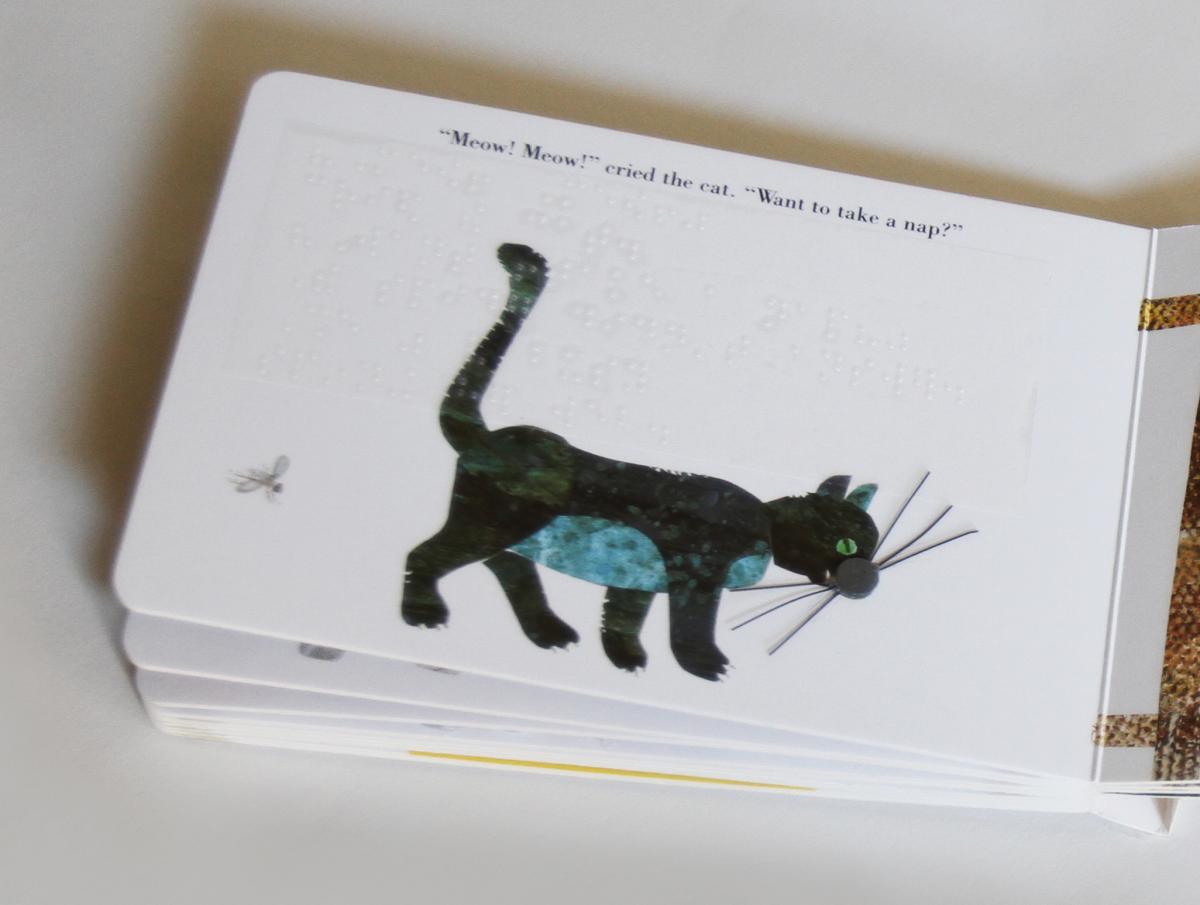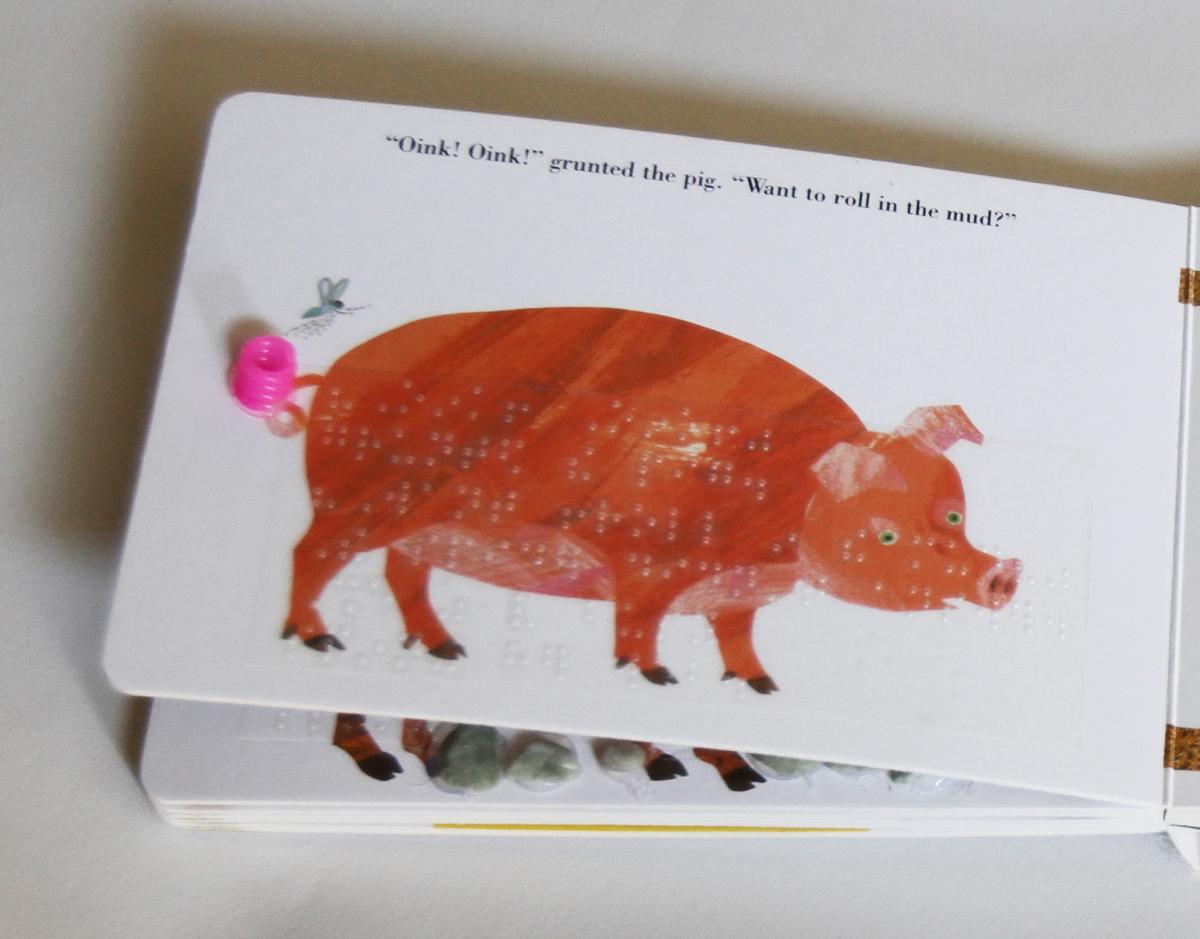Adapting Braille Books for Our Youngest Learners
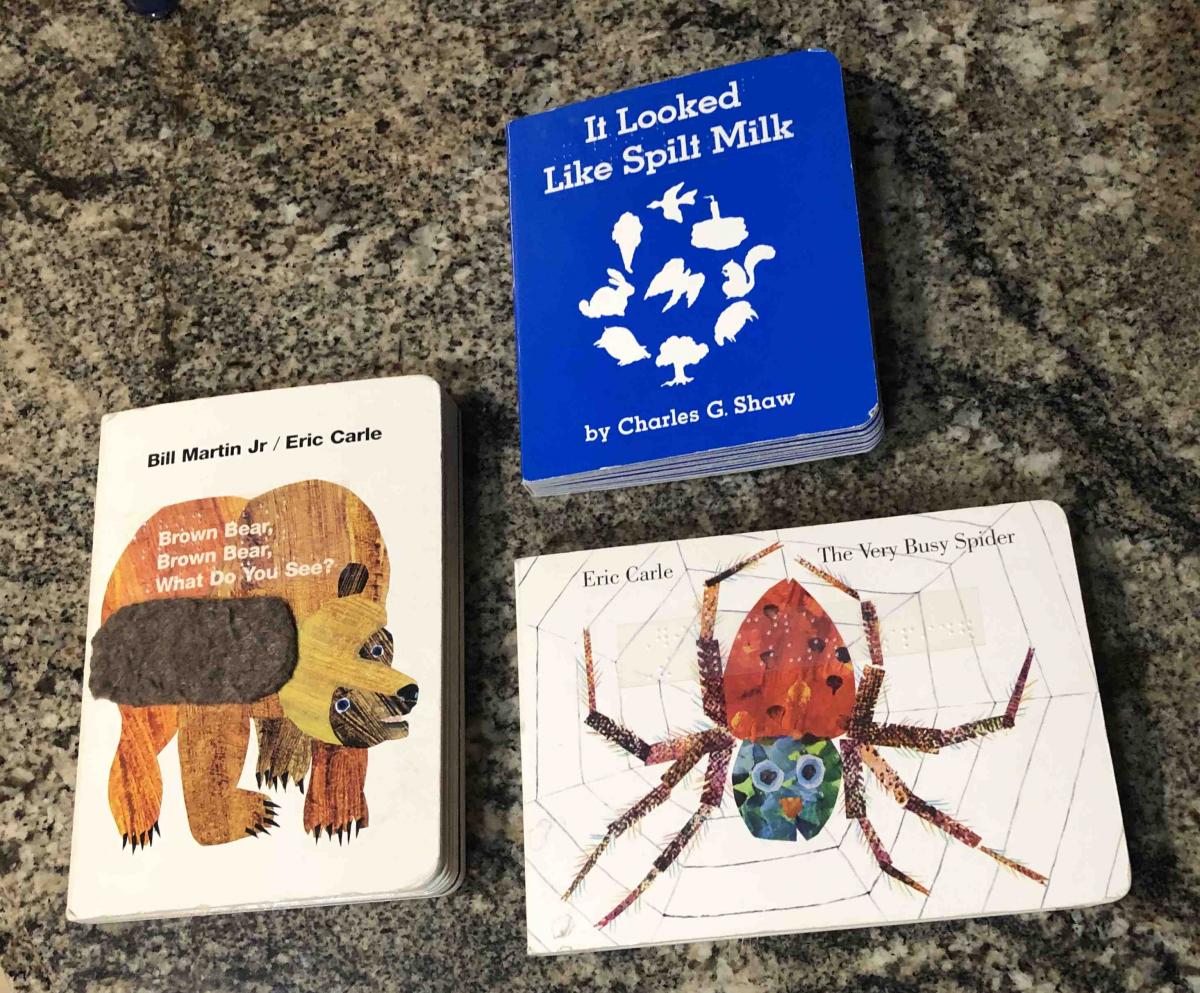 The importance of developing early literacy skills in preschool children is well documented. Literacy competence in our youngest learners helps ensure later success in school. Therefore, as parents and teachers of preschool children who have visual impairments, we purchase books with braille only to find the braille is meaningless for our youngest learners. Sighted children are looking at the pictures and participating in “reading” the book. In an effort to provide the same or similar opportunity for children who have visual impairments tactile representations need to be added.
The importance of developing early literacy skills in preschool children is well documented. Literacy competence in our youngest learners helps ensure later success in school. Therefore, as parents and teachers of preschool children who have visual impairments, we purchase books with braille only to find the braille is meaningless for our youngest learners. Sighted children are looking at the pictures and participating in “reading” the book. In an effort to provide the same or similar opportunity for children who have visual impairments tactile representations need to be added.
There certainly are tactile books on the market for toddlers that our children enjoy. And there are books that are produced specifically for children who have visual impairments that include tactile representations. But there are classics and many childhood favorites that would need to be adapted in order for our children to access.
Adapting braille books for our youngest learners will get their hands on books and engage them in the learning process. Their sighted peers are being exposed to print as they look at picture books long before they are able to read print. Children who have visual impairments need to “see” braille long before it becomes meaningful too. In addition, providing tactile representations help our students begin to develop tactile discrimination skills they will need as they begin to learn to read braille.
How to Choose a Book to Adapt for Our Youngest Readers
When choosing a book to adapt for our youngest learners, consider books with repeated lines such as Brown Bear, Brown Bear, What Do You See? by Bill Martin Jr. Walk into any preschool classroom or day care center and you will likely find children who are able to sit and “read” this book independently.
Look for books that are available in board book format. The thickness of the page supports the tactile representations and is easier for our children to turn independently.
Look for books that are available in braille. Seedlings Braille Books for Children is a wonderful resource for braille books.
Three of my favorites for the youngest learners are Brown Bear by Bill Martin Jr/Eric Carle, The Very Busy Spider by Eric Carle and It Looked Like Spilt Milk by Charles G. Shaw.
Determining Which Items to Represent
Determining what items in the book to represent is a challenge. Keep it simple. Choose one or two items per page. Read the text and decide what is important. Don’t just look at the pictures. For instance, in The Very Busy Spider by Eric Carle there is a picture of a cow. The text reads “Moo! Moo!” said the cow. “Want to eat some grass?” Rather than choose to represent the cow, you might choose to represent the grass.
Deciding How to Represent Items
Deciding how to represent an item or what materials to use is another challenge.
- Keep in mind the child’s perspective. For instance, a bit of an artificial tree branch might be a better choice to represent a Christmas tree than a triangular shape of craft foam of a Christmas tree.
- Consider distinguishing features of the item. For instance, whiskers might be a better representation for a cat than fur, since fur can represent so many animals.
- Use simple shapes when appropriate. Outline shapes of most objects are too complex for our students to identify. However, a craft foam shape of a pumpkin is simple.
- Just be sure it is small enough for our students to see its whole shape with their fingers. Size matters.
- And finally, make it visually appropriate when possible. For instance, use a yellow feather for the yellow duck for the sighted peers or siblings that might be enjoying the book with your student.
I have been a preschool teacher for children who have visual impairments for many years. Over the years we have adapted a number of books. I need to give credit to my Instructional Assistants who have worked with me on a number of projects. Many of our projects have changed and evolved over time. We are always looking for materials that might work better than what we currently are using. There certainly isn’t any “right” material to use for a particular representation or the “right” item to represent. Keep in mind some basic guidelines and just do the best you can. It’s an art not a science.
